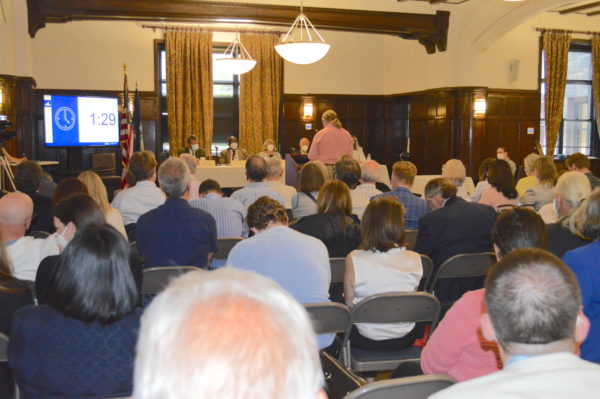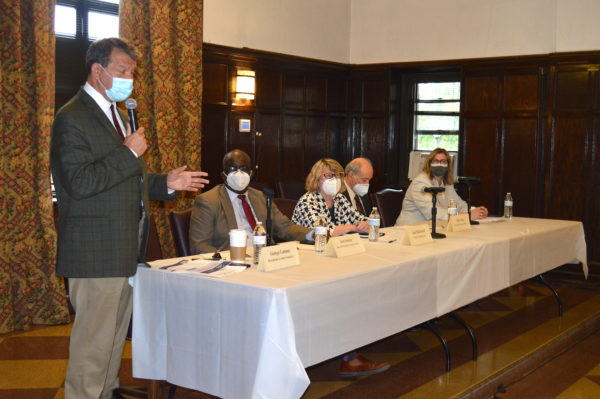First meeting held on Airport Master Plan
The first in a series of meetings to gather public input in the process of creating an updated Airport Master Plan for the Westchester County Airport took place last night at the Elisabeth Haub School of Law at Pace University in White Plains. Many of the speakers expressed concern about airplane noise and environmental impacts from ground operations at the airport, while others emphasized the airport’s importance for residents and businesses. Local pilots, including members of the Westchester Flying Club, which is based at the airport, called for better and more affordable facilities for smaller general aviation aircraft.
Westchester County Executive George Latimer explained that the master plan would be used as a basis for planning capital improvements but was not expected to result in expansion of the airport’s size or nature of the operations taking place there.

“The topics within the master plan process are all fair game for comment,” Latimer told those attending the meeting. “The terminal, the drainage, potential pollution into Rye Lake or potential pollution into Blind Brook, the number of airplanes that are parked at the airport or housed at the airport, what happens with the Fixed Base Operators, the FBOs, the Million Airs, the Ross (Aviation) and so forth, what the economic impact is, what the environmental impact is, all fair game.”
The last full master plan for the airport was completed in 1989. In February 2020, Latimer started to take action for a master plan supplement but the Covid-19 pandemic forced a halt. The airport has 1,485 full-time employees and has an estimated $735 million in economic activity.
Latimer had said in the past that the airport represents a transportation hub of value to the business community as well as being convenient for Westchester residents but there is no desire to turn it into a LaGuardia North.

Consultant Marlene Bauer of the consulting firm InGroup explained that the master plan would include analysis of the physical condition of the airport property, buildings and infrastructure. She said there would be additional analysis of noise and environmental impacts along with the local and regional economic impacts of the airport.
Bryon Rakoff, senior airport planner with consulting firm Merchant Aviation, said the study would not propose expansion of the airport outside of its existing footprint.
“We are not going to be proposing any changes to the terminal use agreement, which limits the number of passengers, the number of airliners that are coming in at certain times of the day and we’re not going to be recommending elimination of the voluntary restrictions on overnight flights,” Rakoff said.
Anne Gold of the Purchase Environmental Protective Association, said the organization’s position on the airport “has been to oppose further expansion and thus limit the airport’s increased environmental impacts on drinking water quality, airport noise and air pollution.” She called for the Airport Master Plan to outline specific steps to limit impacts for the future.
Bob Levy, a resident of Mount Pleasant, said he is directly affected by noise from airplanes arriving at the airport that follow an approach path over his community.
“Mount Pleasant suffers the impact of the planes but generates no economic impact directly from the airport,” Levy said. “One of the things you say is you’re not going to increase the size. The size already is larger than LaGuardia.”
On June 2 at 6 p.m., there”™s a second public meeting on the Airport Master Plan at Manhattanville College in Purchase. A third meeting is set for June 9 at 6 p.m. at Mercy College in Dobbs Ferry.